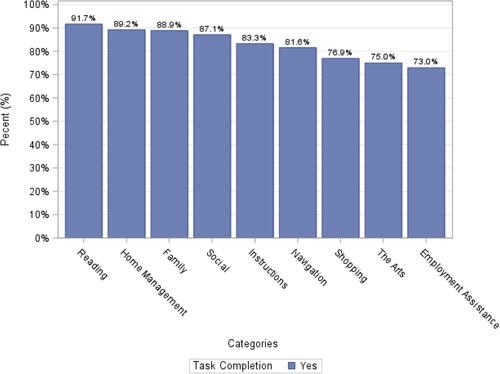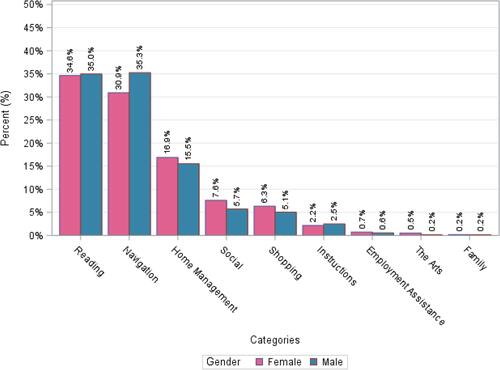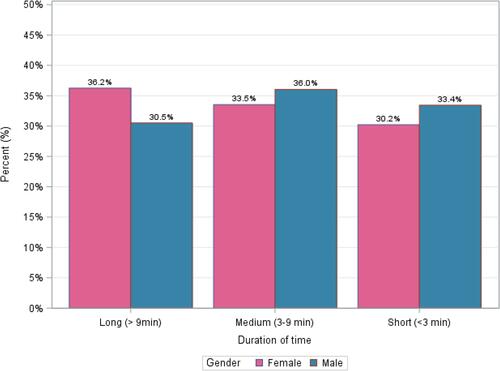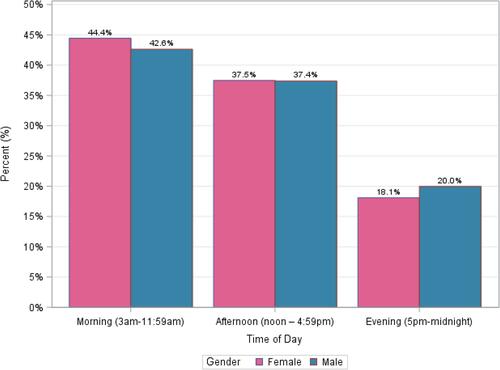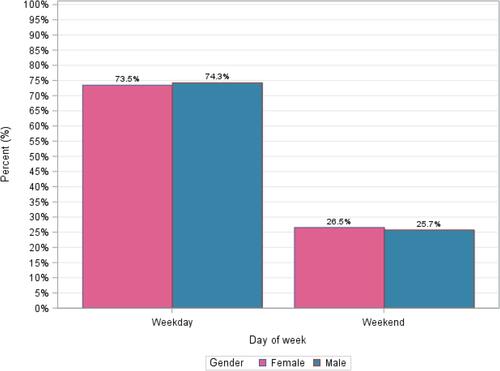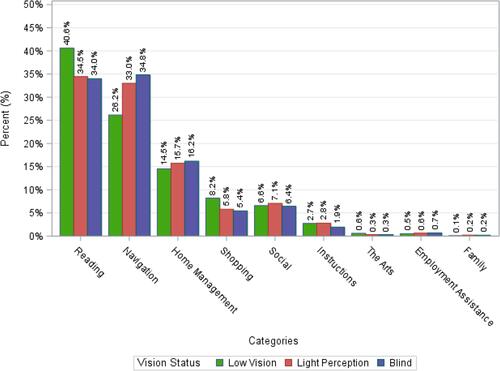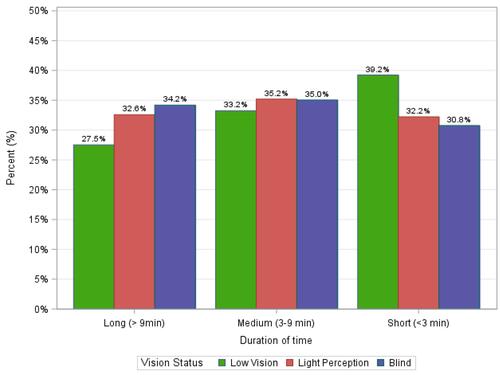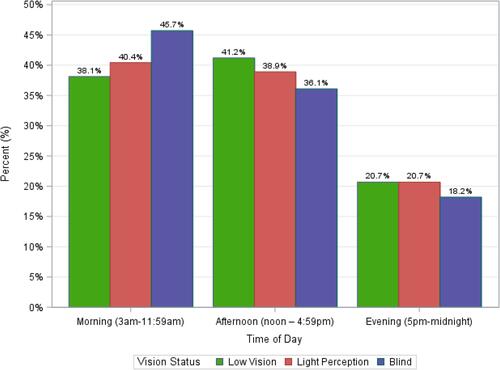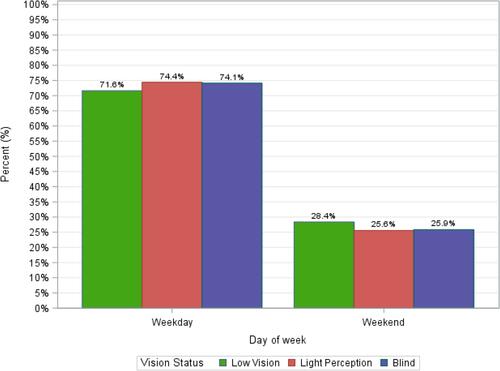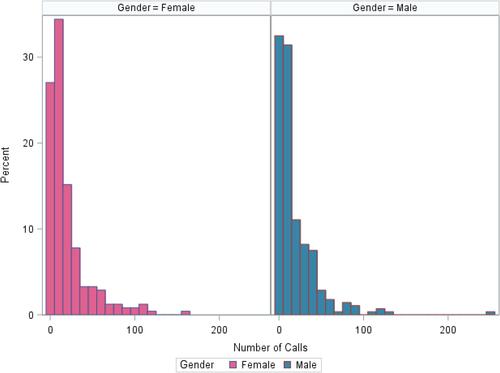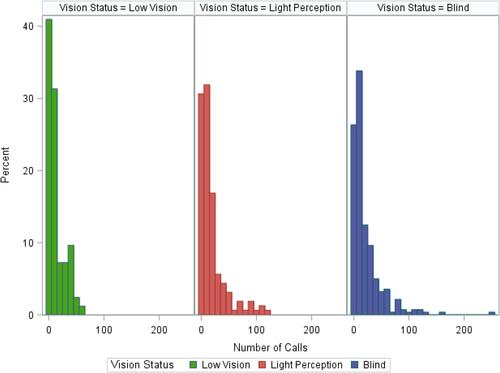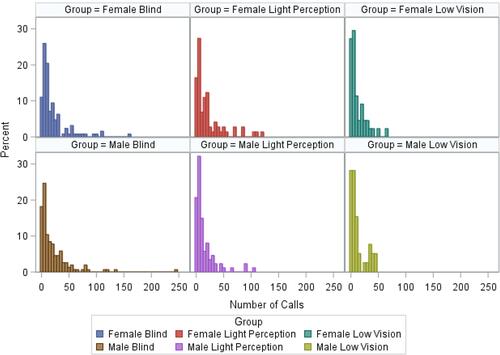Figures & data
Figure 1 (A) A low vision person using Aira to connect to an (B) agent who is using a software dashboard comprised of the wearable device’s live video stream, as well as additional applications that assist with task coordination.

Table 1 Number of calls by gender
Table 2 Number of calls by vision status
Table 3 Number of calls by gender and vision status
Table 4 Poisson regression to estimate the usage rates by gender and vision status
Table 5 Brief summary of currently available assistive technologies

